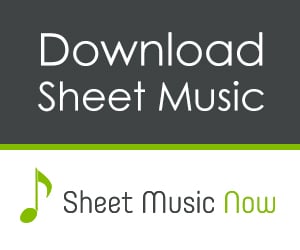Some people attribute the idea in this to a work by Byzantine saint and poet Symeon the New Theologian (949–1022) that Christ is a "Garland that never withereth." [source].
The tune is by Tchaikowsky, based on a score edited by Ralph L Baldwin (1872 - 1943), which was first published as a four part chorus for mixed voices by G Schirmer Inc in 1891.
Downloads
Examples
Lyrics
Christ, when a child, a garden made,And many roses flourished there.
He watered them three times a day
To make a garland for His hair.
And when in time the roses bloomed,
He called the children in to share.
They tore the flowers from every stem,
And left the garden stript and bare,
"How wilt Thou weave Thyself a crown
Now that They roses are all dead?"
"Ye have forgotten that the thorns
Are left for Me, the Christ child said.
They plaited then a crown of thorns
And laid it rudely on His head;
A garland for His forehead made;
For roses: drops of blood instead.
ABC Notation
X:1T:A Legend - Christ when a Child
A:Words: Nathan Haskell Dole
C:Music: Pyotr Tschaikowski as edited by Ralph L Baldwin
Z:abc-transcription www.GodSongs.net
M:2/4
L:1/8
K:G
e2 e d | G3 A | B2 B2 | E2 z B | e2 d2 | G3 A |
w:Christ, when a Child, a gar-den made, and many_ roses_
B2 B2 | E4 | z EEF | G3 F | E2 D2 | E4 |
w:flou-rished there. He wa-tered them three times a day
z EEF | G3 F | E2 D2 | E2 z B | e2 d2 | G3 A |
w:To make a gar-land for His hair. And when in time the
B2 B2 | (E2 G) B | e2 d2 | G3 A | B2 B2 | E4 |
w:roses_ bloom-ed, he called the child-ren in to share.
z EEF | G3 F | E2 D2 | E4 | z E E F | G3 F |
w:They tore the flowers from ev-ery stem, and left the gar-den
E2 D2 | E4 | z G G A | (B2 e) z | z e g f | (e2 B) z |
w:stript and bare, "How wilt Thou weave_ thy-self a crown_
z G A A | B2 e2 | g2 f2 | e3 z | z E E F | G2 F2- |
w:now that the roses_ are all dead?" "Ye have for-got-
F2 E D | E4 | z E E F | G2 z F | E2 D2 | E3 z |
w:ten that the thorns are left for Me, the Christ child said.
F2 F F | G3 G | A3 A | B3 B | d2 c2 | B2 E2 |
w:They plait-ed then a crown of thorns and laid it rude-ly
G2 F2 | E3 E | F3 F | G3 G | A3 A | B3 B |
w:on His head; A gar-land for His fore-head made; For
d2 c2 | B3 E | E E E2 | z2 E2 | G2 F2 | E4-|E z z2 | ]
w:rose-s: drops of blood in-stead, of blood in-stead._




I remember singing this song in my high school choir back in the 1950s! So sad it is, but maybe that's the reason I never forgot it ....
ReplyDeleteBeautiful! My church's children's choir sang this piece under the direction of Paul G. Strieter in the late 1950s. The melody is so very similar to one of the movements of Mendelsshon's Symphony No. 4 ("Italian"). It can be speculated that Tchaikovsky patterned the opening motif after it.
ReplyDelete